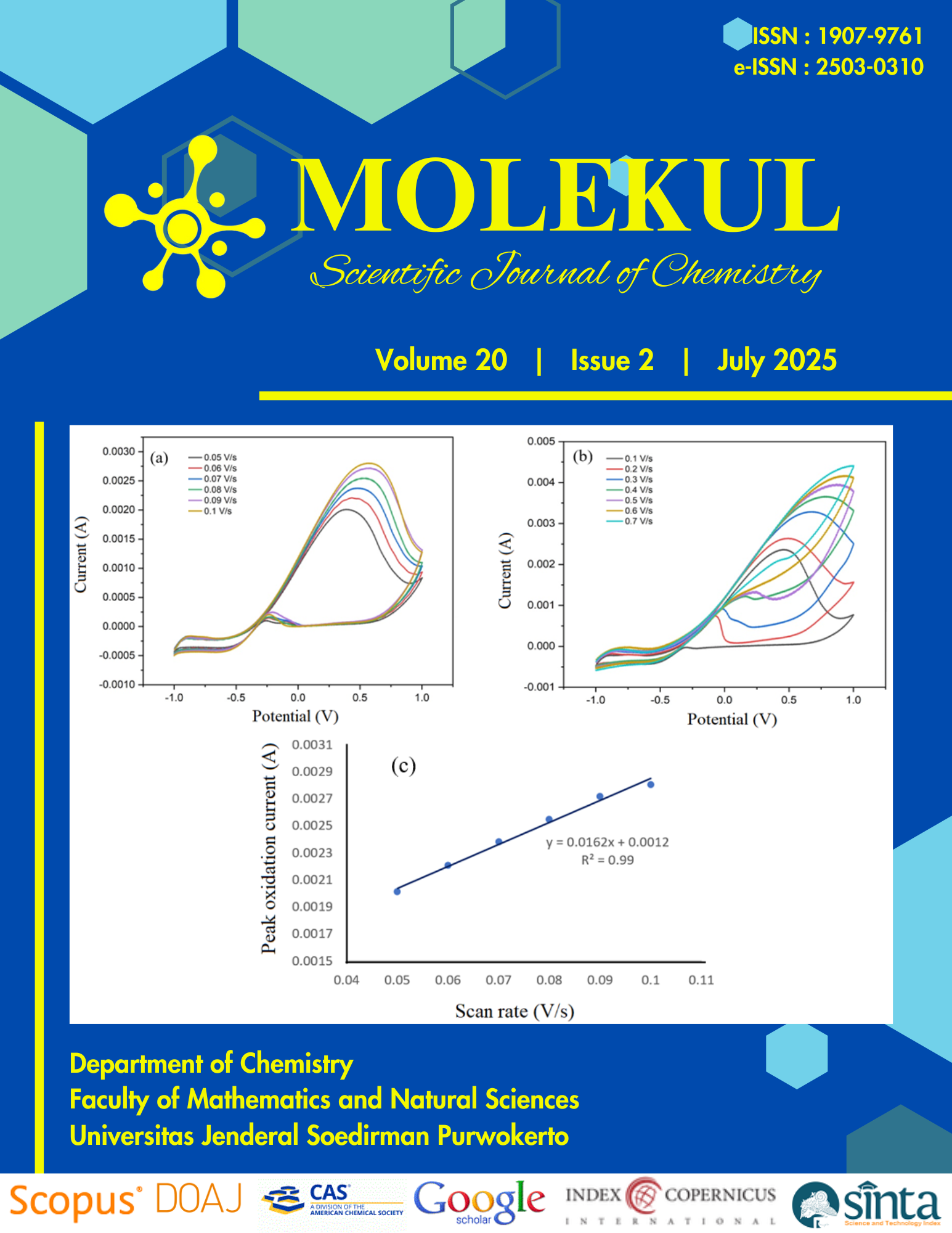Eco-friendly Sunscreen: Aloe vera and Garlic-Shallot Peel Extract Formulation for Enhanced SPF
Abstract
ABSTRACT. In the past 5 years, research has reported that chemical sunscreen products pose risks of irritation and environmental impact, necessitating safer natural alternatives, such as eco-friendly sunscreen. This study aimed to formulate a natural sunscreen by combining Aloe vera gel with garlic-shallot peel waste extracts and evaluate their solar protection factor (SPF), physical stability, overall quality, and organoleptic-hedonic test. The Aloe vera and extracts of garlic and shallot peels were prepared using modified infusion and solvent extraction techniques. The sunscreen formulas were created in nine variations with different concentrations of natural ingredient combinations. SPF values were determined in vitro using UV/Vis spectrophotometry, and the physical stabilities were tested using the cycling method. Overall quality tests were performed using the method as described in the standard and requirements for sunscreen products in Indonesia (SNI 16-4399-1996), and the procedure for determining the organoleptic-hedonic test referred to the organoleptic and/or sensory testing instructions (SNI 01-2346-2006). The results showed that all nine formulations met most of the quality standards of sunscreen. However, the panelist preferred formulas without garlic and shallot extracts due to the prominent odor of garlic and shallot. Further studies will be performed by combining them with fragrances that panelists prefer to cover the deficiencies in unpreferred odors. Formulas with garlic and shallot peel extracts have ultra-protection SPF values, though their effectiveness decreased with increased Aloe vera concentrations. These results indicate that garlic and shallot peel waste have the potential as sustainable, environmentally friendly sunscreen ingredients with high UV protection capabilities.
Keywords: Aloe vera, garlic peel, shallot peel, SPF, sunscreen
Authors agree with the statements below:
- Authors automatically transfer the copyright to the MOLEKUL journal and grant the journal right of first publication with the work simultaneously licensed under a Creative Commons Attribution 4.0 International License (CC BY 4.0).
- Authors are able to enter into separate permission for the non-exclusive distribution of the journal's published version of the work (e.g., post it to an institutional repository or publish it in a book), with an acknowledgment of its initial publication in this journal.













